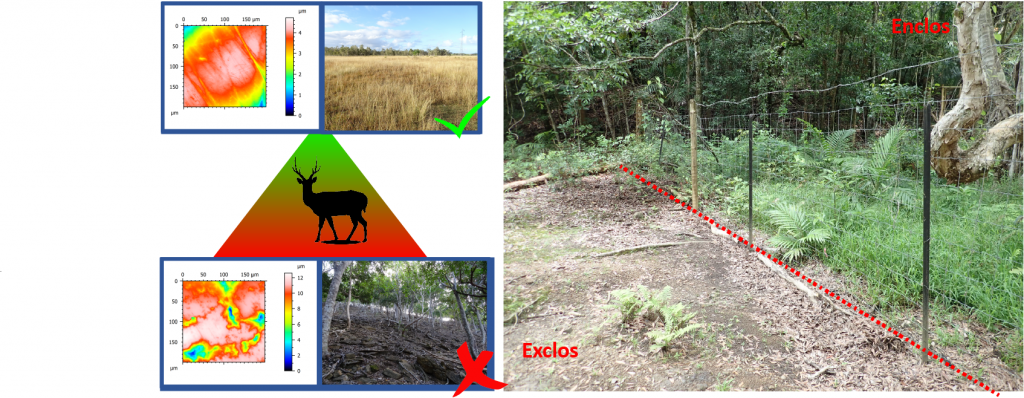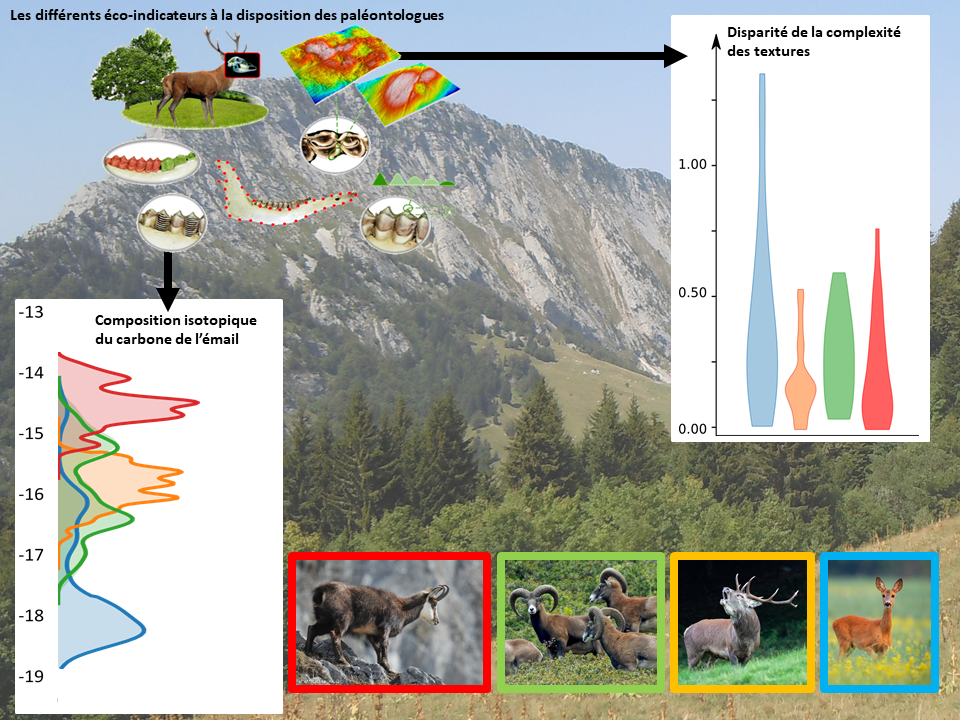Ruminants

Development of new models:
The rusa deer (Timorensis rusa), an invasive species introduced in New Caledonia (a biodiversity hotspot) in 1870, is currently a significant concern from both an agricultural and environmental point of view, due to its dramatic impact on Caledonian flora and fauna (including a large number of endemic species). Texture analysis as a cursor for the impact of rusa deer on New Caledonian habitats was proposed and tested as part of the annual monitoring of 10 populations. This was a very new application of this approach, in response to the need to develop monitoring tools capable of assisting decision-making for the management of these populations, and which are as well adapted as possible to the Caledonian context and issues.
Émilie Berlioz’s work in progress

In a remote corner of the mountain…
The aim was to test the relevance of dental eco-indicators for tracing the altitudinal distributions of species in relation to those of habitats and food resources. To this end, we analyzed ecological proxies frequently used by paleontologists (microwear, carbon and oxygen isotopes) on a community of 4 sympatric ruminant species (roe deer, red deer, mouflon and chamois) from the Bauges regional nature park in the Alps.
Merceron et al., 2021: https://www.sciencedirect.com/science/article/abs/pii/S0031018220305253Funded by


Partners and Collaborations







